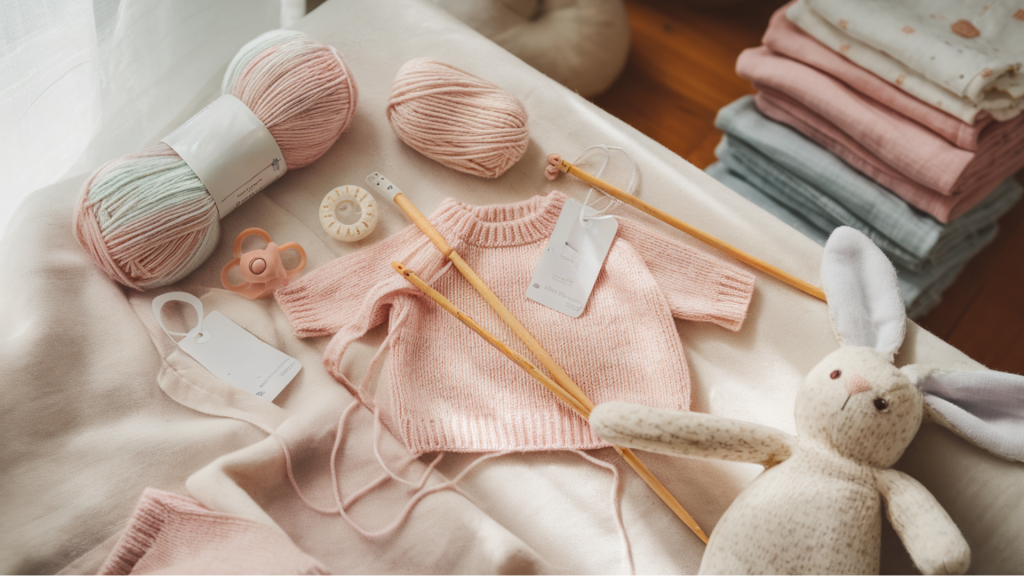Choosing the right yarn for baby projects is essential for both comfort and safety. Babies have delicate skin, so selecting a yarn that feels soft and won’t cause irritation is critical. At the same time, you’ll want something durable enough to withstand frequent washing and daily use.
Acrylic yarn is popular because it’s affordable, widely available, and easy to care for. But is it safe for babies? In short, yes—when you choose high-quality acrylic yarn, it can be soft, non-irritating, and gentle on sensitive skin.
When picking yarn for baby clothes or blankets, consider texture, washing requirements, and hypoallergenic properties. Focusing on these factors will ensure your baby’s items are safe and comfortable.
Understanding Acrylic Yarn and Baby Safety
Acrylic yarn is widely used for making baby clothes and accessories, but parents and crafters often wonder if it’s truly safe for babies. Before deciding, it’s important to understand what acrylic yarn is, how it compares to natural fibers, and what factors contribute to its safety.
What is Acrylic Yarn?

Acrylic yarn is a synthetic material created from petroleum-based polymers. Unlike wool, which comes from animals, or cotton, which comes from plants, acrylic is manufactured in a laboratory setting.
The process involves polymerizing compounds like acrylonitrile to form durable, lightweight fibers that are spun into yarn. Because it is synthetic, acrylic yarn doesn’t have the same breathable qualities as natural fibers.
However, it offers practical benefits, such as resistance to mold, mildew, and moth damage. These qualities make it a popular choice for projects that need to last, especially for items that will be frequently washed or used outdoors.
Is Acrylic Yarn Safe for a Baby’s Skin?
The softness of acrylic yarn can vary, but many brands produce lines specifically designed for sensitive skin, including babies. These yarns are often pre-softened during manufacturing to ensure they don’t irritate.
In addition, acrylic is generally considered hypoallergenic, meaning it’s less likely to trigger allergic reactions than some natural fibers like wool, which can contain lanolin.
While cotton and bamboo offer greater breathability, acrylic yarn can still be suitable for baby clothes and blankets if you choose a high-quality, baby-friendly variety.
Just keep in mind that acrylic yarn doesn’t wick moisture as well as cotton, so it might not be the best choice for hot climates.
Is Acrylic Yarn Non-Toxic?
Acrylic yarn is typically considered safe, but choosing yarns that meet safety standards is important, especially when making baby items.
Some lower-quality acrylics may have trace amounts of chemicals from the production process, but reputable brands often have their yarns tested to ensure they are free from harmful substances.
Look for certifications such as OEKO-TEX® Standard 100 or labels that indicate the yarn is free from toxic dyes and harsh finishes. These certifications help ensure that the yarn is safe for direct contact with a baby’s delicate skin.
Common Uses of Acrylic Yarn for Baby Items
Acrylic yarn is a flexible and affordable choice for various baby-related projects. Its durability and low-maintenance qualities make it particularly appealing to busy parents. Some of the most popular uses include:
- Baby blankets: Soft, warm, and easy to wash, acrylic blankets are perfect for everyday use. They come in a wide range of colors, making it easy to match nursery themes.
- Sweaters and cardigans: Lightweight yet cozy, acrylic sweaters are comfortable for babies and simple to care for. They retain their shape after washing and are available in various patterns and designs.
- Hats, mittens, and booties: Acrylic yarn is gentle on tender skin, making it a great choice for accessories that babies wear frequently. It also holds its shape well, ensuring these items stay snug and comfortable.
- Soft toys: Acrylic’s durability allows it to withstand frequent handling. Many parents prefer acrylic for toys because it can be easily washed and sanitized, ensuring the baby’s playthings remain safe and clean.
By understanding the production process, evaluating the softness and hypoallergenic properties, and looking for non-toxic certifications, you can confidently use acrylic yarn for various baby projects.
Comparing Acrylic Yarn to Other Baby-Friendly Yarns
Choosing the best yarn for baby items often involves comparing different types of fibers. Each type of yarn has characteristics that can influence comfort, durability, and ease of care, making it important to consider your project’s needs and the environment in which it will be used.
Acrylic vs. Wool for Baby Clothes
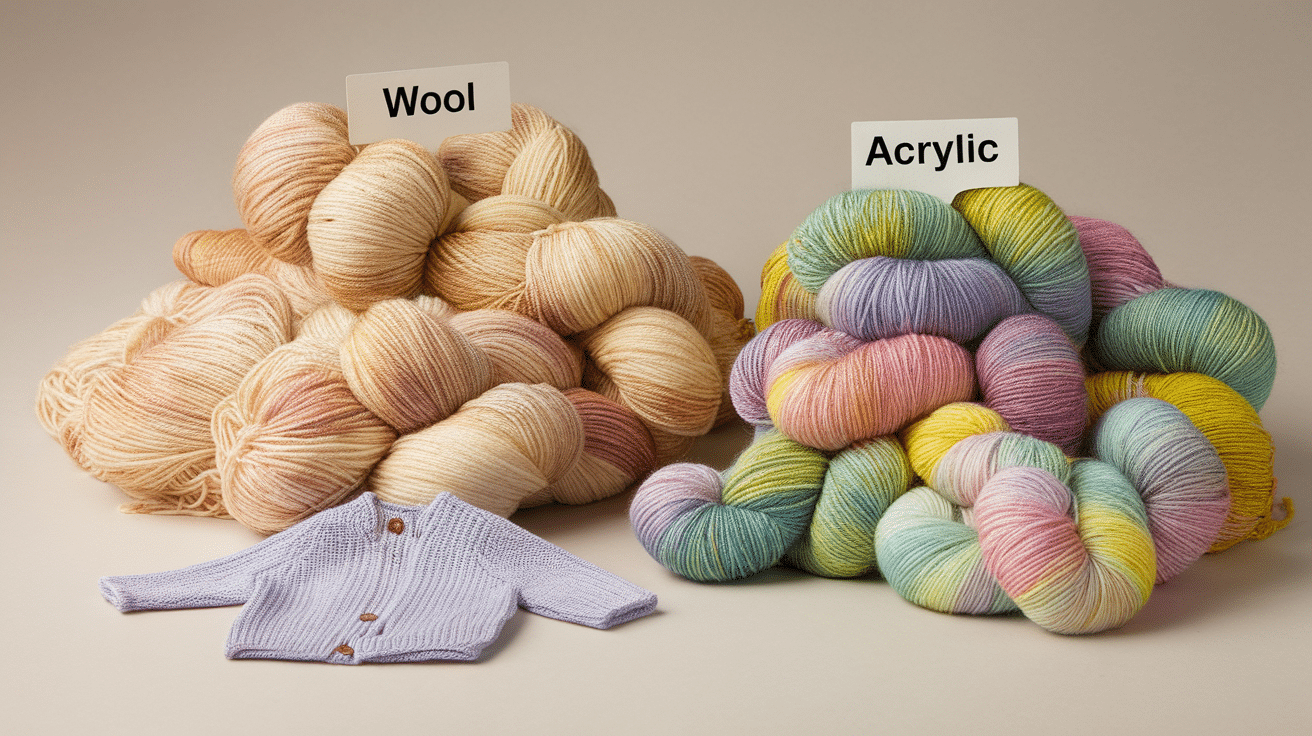
Wool is known for its natural warmth and softness, making it ideal for cold-weather garments. While some wool varieties, like Merino, are very soft, others can be itchy against sensitive skin. Acrylic yarn, on the other hand, can mimic the softness of wool while being more affordable.
It’s also hypoallergenic, making it a safer choice for babies who are sensitive to wool’s natural lanolin.
Acrylic yarn has the advantage when it comes to maintenance. Wool garments often require handwashing or special detergents to maintain their shape and softness.
Acrylic yarn items are generally machine-washable and more resistant to shrinking, making them easier to care for on a busy schedule.
Acrylic vs. Cotton: Which is Better for Babies?
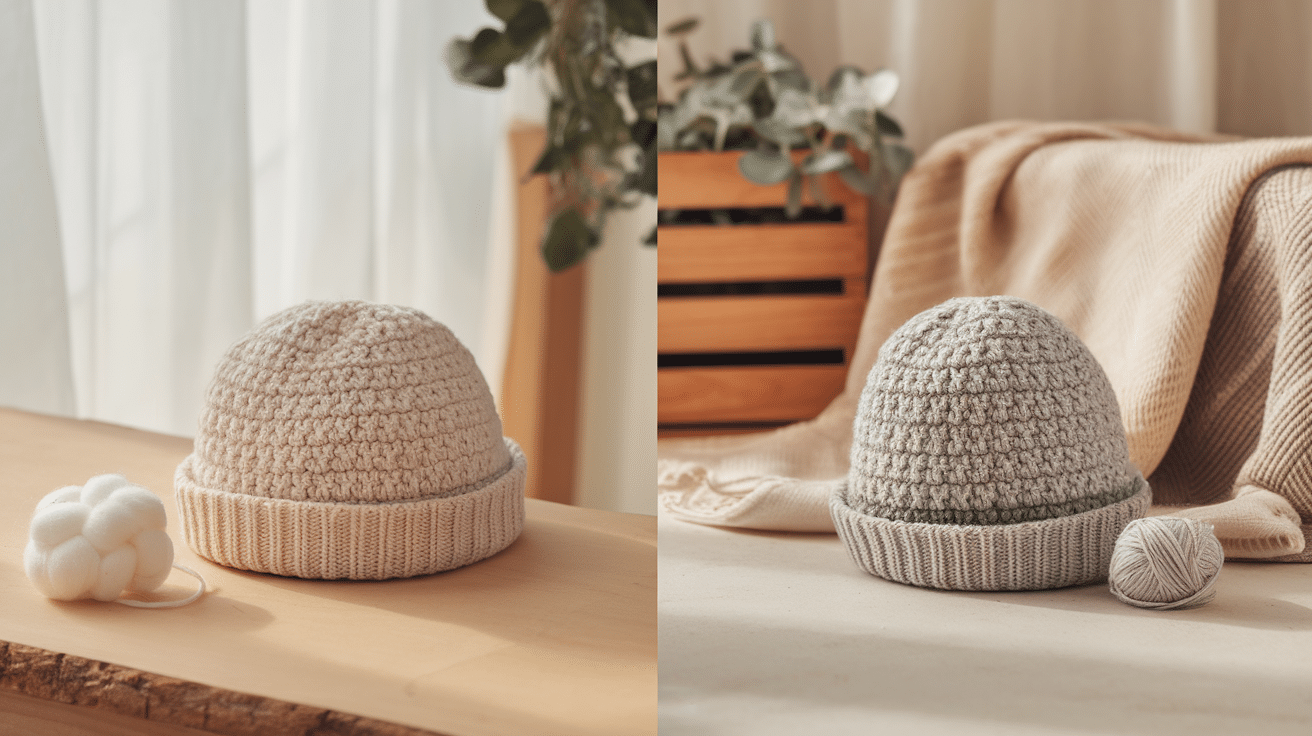
Cotton is a natural fiber that’s highly breathable and absorbent, making it an excellent choice for summer baby clothes and accessories.
However, it can feel heavy when wet and may take longer to dry. Acrylic yarn isn’t as breathable as cotton, but it dries quickly and retains its shape, which can be beneficial for year-round use.
Both materials are strong in terms of durability, but acrylic yarn often outlasts cotton in repeated wash cycles. Cotton can lose some of its softness and become less resilient over time, while acrylic is designed to maintain its texture and form.
Acrylic’s ability to hold warmth may make it the more practical choice for winter clothing, whereas cotton’s lightness is perfect for warmer months.
Acrylic vs. Bamboo Yarn for Baby Knits
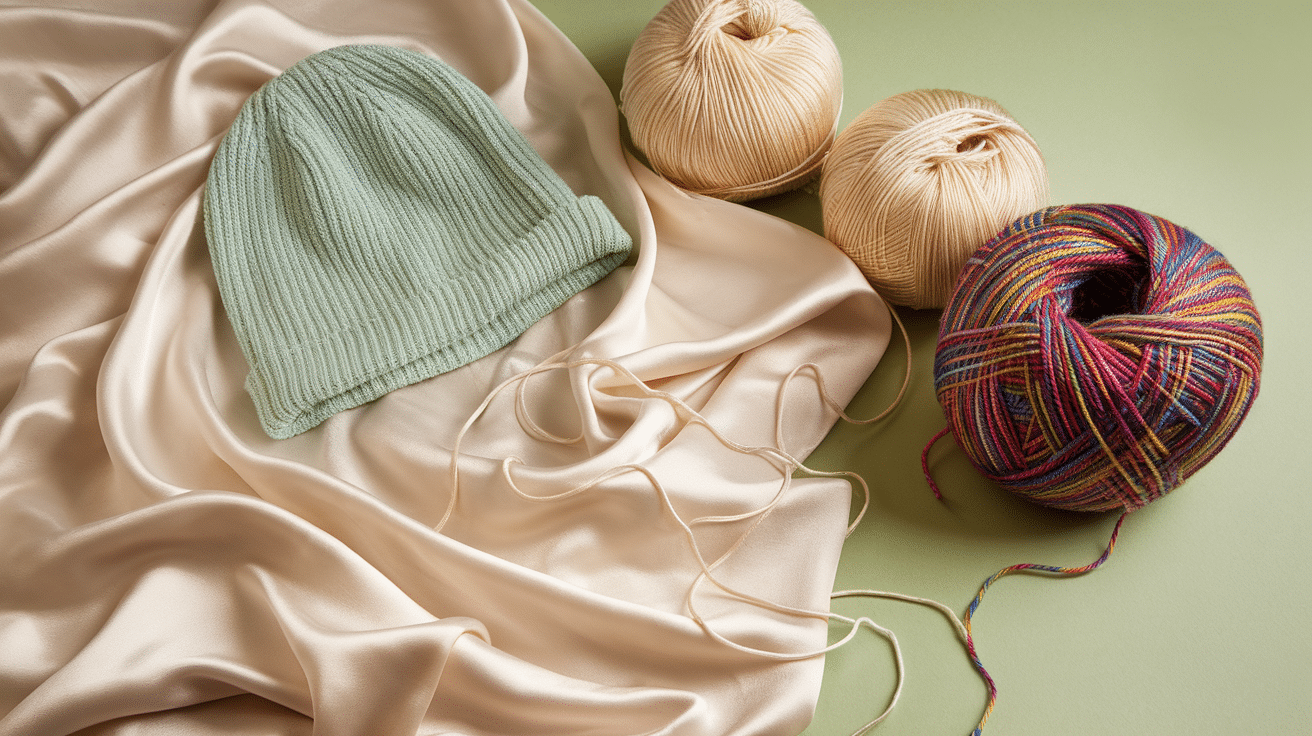
Bamboo yarn is known for its silky texture and eco-friendly production. It’s incredibly soft, making it a comfortable choice for baby skin. However, bamboo yarns tend to have less stretch and may not hold their shape as well over time.
While not as smooth, acrylic yarn offers better elasticity and shape retention, ensuring that baby clothes and blankets maintain their fit and appearance through regular use.
From an environmental perspective, bamboo is a more sustainable option, as it’s derived from a renewable resource. Bamboo-cotton blends are also available for those looking to balance eco-consciousness with practicality.
Acrylic, while not biodegradable, is widely available and often more budget-friendly, making it a convenient choice for large projects or for those who need easy and long-lasting yarn.
Understanding the differences between these fibers allows you to choose the yarn that best suits your baby knitting projects. Each has its strengths, and the right choice will depend on the item’s purpose, the climate, and your personal preferences for care and durability.
Choosing the Best Acrylic Yarn for Babies
Not all acrylic yarns are created equal when it comes to making items for babies. Some types are softer and more suitable for delicate skin, while others may be too coarse or shed more than desired. Knowing what to look for can help you select the best acrylic yarn for your baby projects, ensuring that the items you create are safe, comfortable, and long-lasting.
Soft Acrylic vs. Standard Acrylic
Acrylic yarns vary in softness, with some brands offering lines specifically designed for babies. These baby-friendly yarns are pre-softened, providing a smooth and gentle feel against a baby’s sensitive skin.
In contrast, standard acrylic yarns can sometimes feel stiff or scratchy. Choosing soft acrylic yarn ensures that blankets, hats, and clothes are not only durable but also pleasant to wear.
Some popular baby-safe acrylic brands include those labeled as “baby” or “soft,” as they are tested for gentleness and often come in pastel shades ideal for baby projects.
Acrylic Blends for Better Comfort
Blended acrylic yarns combine the durability of synthetic fibers with the comfort of natural materials. For instance, acrylic-cotton blends offer improved breathability and softness, making them an excellent choice for baby blankets and summer clothes.
On the other hand, acrylic wool blends add warmth and elasticity, making them ideal for colder climates and winter clothing. These blends reduce some downsides of pure acrylics, such as static or pilling, while retaining the easy-care properties that make acrylic yarn popular.
By choosing a blended yarn, you can tailor your baby’s items to suit the season and ensure greater comfort for your little one.
What to Look for in a Baby-Safe Acrylic Yarn
When selecting acrylic yarn for babies, certain features are essential. Machine-washable yarns save time and effort, especially when dealing with frequent spills and messes.
Low-shed and anti-pilling yarns help maintain the look and feel of the finished project, ensuring that baby clothes and blankets stay smooth and free of lint. Additionally, it’s crucial to choose yarns certified as safe and free from harmful chemicals.
Labels indicating non-toxic dyes and finishes give peace of mind that your baby’s items are comfortable and safe for delicate skin.
Caring for Acrylic Yarn Baby Items
Once you’ve created baby clothes, blankets, or toys from acrylic yarn, proper care ensures they remain soft, clean, and long-lasting. Acrylic yarn is known for being low-maintenance, but following some simple guidelines helps keep your items in top condition.
Washing and Maintenance Tips
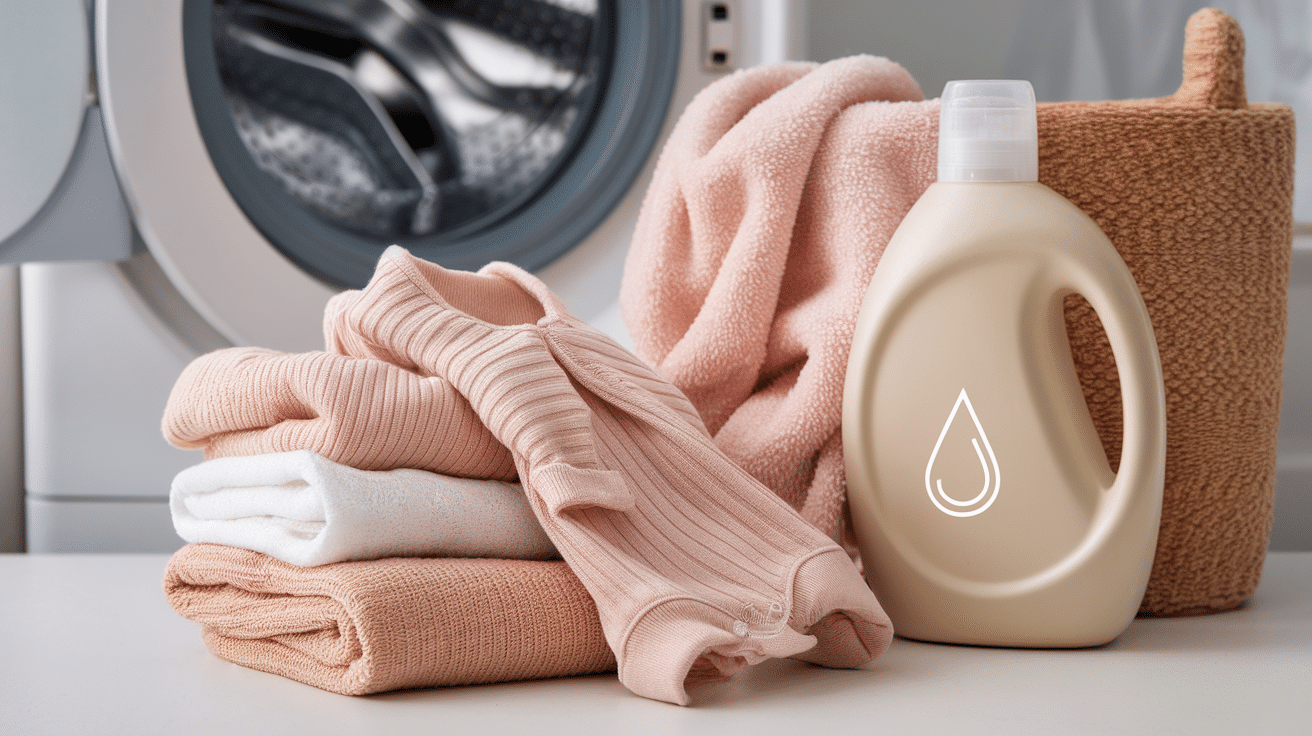
Acrylic yarn is often machine-washable, making it convenient for busy parents. Use a gentle cycle with cold or warm water and avoid high-heat settings. If the yarn’s label recommends hand washing, use mild soap and rinse thoroughly.
When choosing a detergent, look for ones designed for baby clothes—these are free from harsh chemicals and fragrances that might irritate sensitive skin.
After washing, avoid tumble drying on high heat; use a low heat setting or air-dry the items to maintain their softness and shape. If static becomes an issue, try a fabric softener or dryer sheet designed for baby-safe materials.
Preventing Pilling and Wear Over Time
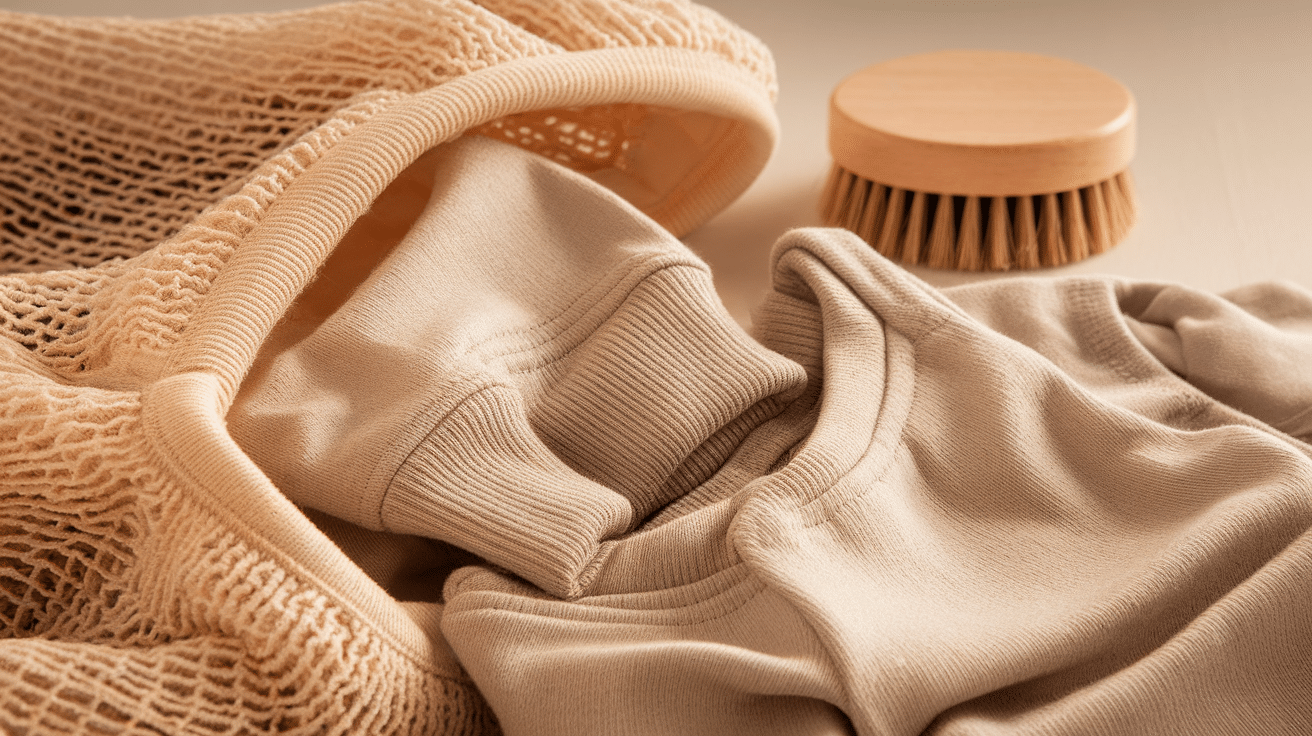
Pilling occurs when small fibers break loose and form tiny balls on the surface of the yarn. To minimize pilling, wash items gently and avoid high-friction settings in the washing machine. Using a delicate laundry bag can also help reduce wear during washing.
Some acrylic yarns are more prone to pilling than others, so investing in a high-quality, low-pilling yarn from the start can make a big difference. After washing, gently reshape the garments to prevent further wear. This helps baby clothes, blankets, and toys stay looking new longer.
Storage Tips for Acrylic Baby Knits
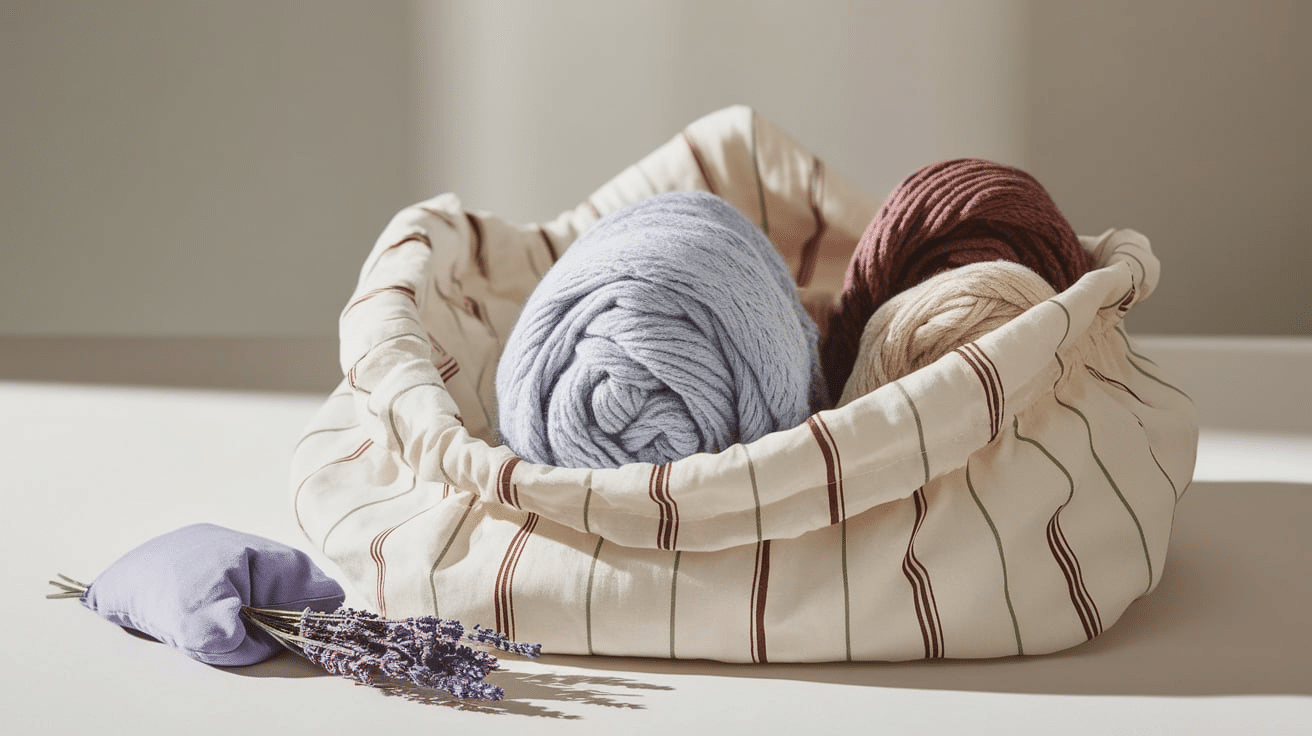
Proper storage helps maintain the shape and texture of acrylic baby items. When not in use, fold garments neatly and store them in a dry, cool place. Avoid hanging heavier items, as they may stretch out over time.
Using breathable fabric storage bags or plastic bins with air holes helps prevent moisture buildup and keeps the items free from dust. For long-term storage, ensure the items are clean and completely dry before putting them away to prevent mildew or odors.
Following these simple steps, you’ll keep your acrylic yarn baby items in excellent condition, ready for future use or as hand-me-downs.
Environmental and Health Considerations
When choosing yarn for baby projects, it’s important to consider both environmental and health factors. Acrylic yarn’s production, use, and disposal have ecological impacts, and alternatives can help reduce those concerns.
Is Acrylic Yarn Eco-Friendly?
Acrylic yarn is made from synthetic polymers derived from petroleum, which is not a renewable resource. Producing acrylic involves high energy use and greenhouse gas emissions. The fibers do not biodegrade, meaning they remain in landfills for a very long time.
Washing acrylic items can release tiny plastic particles—microplastics—into wastewater, potentially harming aquatic life. While acrylic yarn is affordable and convenient, it is not considered an environmentally sustainable option.
Safer Alternatives to Acrylic Yarn for Babies
Organic cotton, merino wool, and bamboo yarn are more sustainable and baby-friendly choices. Organic cotton is grown without harmful pesticides, making it a healthier option for the environment and for delicate skin.
Merino wool is natural, renewable, and provides excellent warmth, though it may cost more. Bamboo yarn grows quickly without chemical fertilizers, making it a more sustainable choice.
However, some bamboo yarns undergo chemical processing, so it’s important to look for brands that use eco-friendly methods. Choosing these natural fibers helps reduce the environmental impact of crafting baby items.
Can Acrylic Yarn Be Recycled?
Although traditional recycling methods cannot turn used acrylic yarn back into new yarn, there are ways to reuse it. Old acrylic projects can be unraveled and repurposed for new items.
Additionally, some companies now produce yarn from recycled plastic, offering an alternative that uses existing resources rather than creating new materials. Supporting recycled yarn products helps minimize waste and lessens the demand for new synthetic fiber production.
Considering these environmental and health factors ensures that the yarn you choose creates soft, baby-friendly items and helps limit the overall impact on the planet.
5 Tips for Choosing the Best Acrylic Yarn for Babies
When choosing acrylic yarn for baby clothes or blankets, it is important to focus on more than just color or price. Selecting the right type of yarn ensures your creations will be soft, safe, and easy to maintain. By following these tips, you can make better choices that result in more comfortable and durable baby items.
1. Look for Ultra-Soft, Baby-friendly Acrylic Yarns
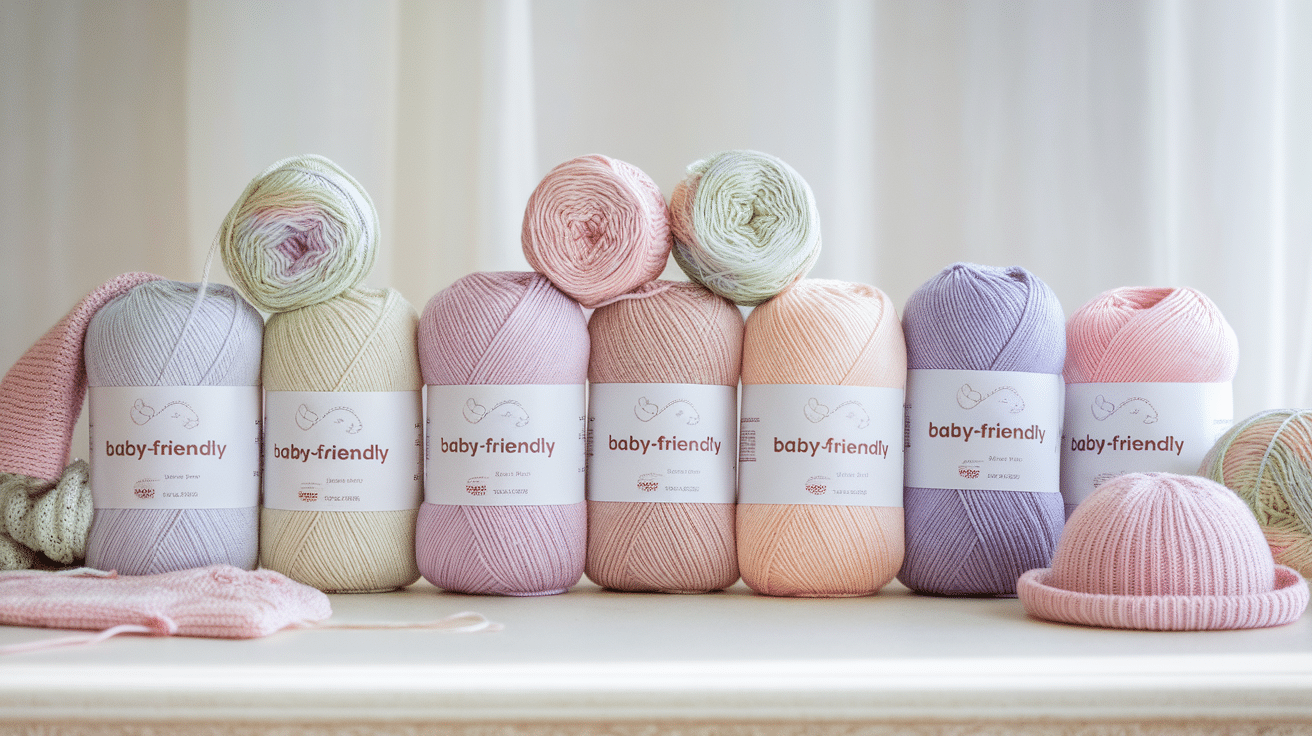
Many acrylic yarns are specifically designed for babies. These options are smoother and gentler on sensitive skin, making them ideal for baby projects.
Choosing yarn labeled as baby soft ensures a comfortable fit that won’t cause irritation or discomfort. A softer texture makes for cozy baby blankets, hats, and clothes.
2. Choose Machine-Washable Yarn for Easier Care
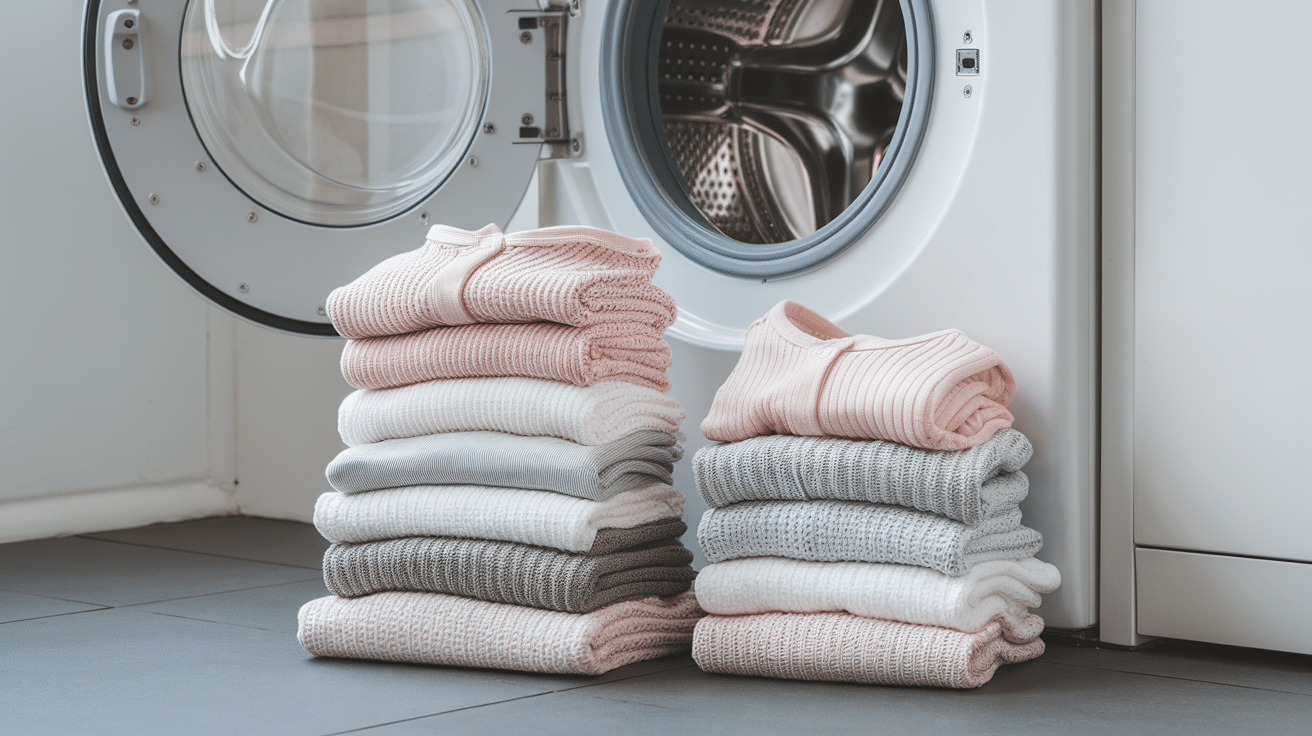
Babies can be messy, so easy cleaning is a priority. Machine washable yarn simplifies laundry days, allowing parents to clean clothes and blankets without extra hassle quickly. Projects made from washable acrylic yarns will stay in better condition over time, even after frequent washes.
Always check the label to confirm the washing instructions so you can select a yarn that will hold up well.
3. Avoid Rough or Scratchy Acrylic Yarns
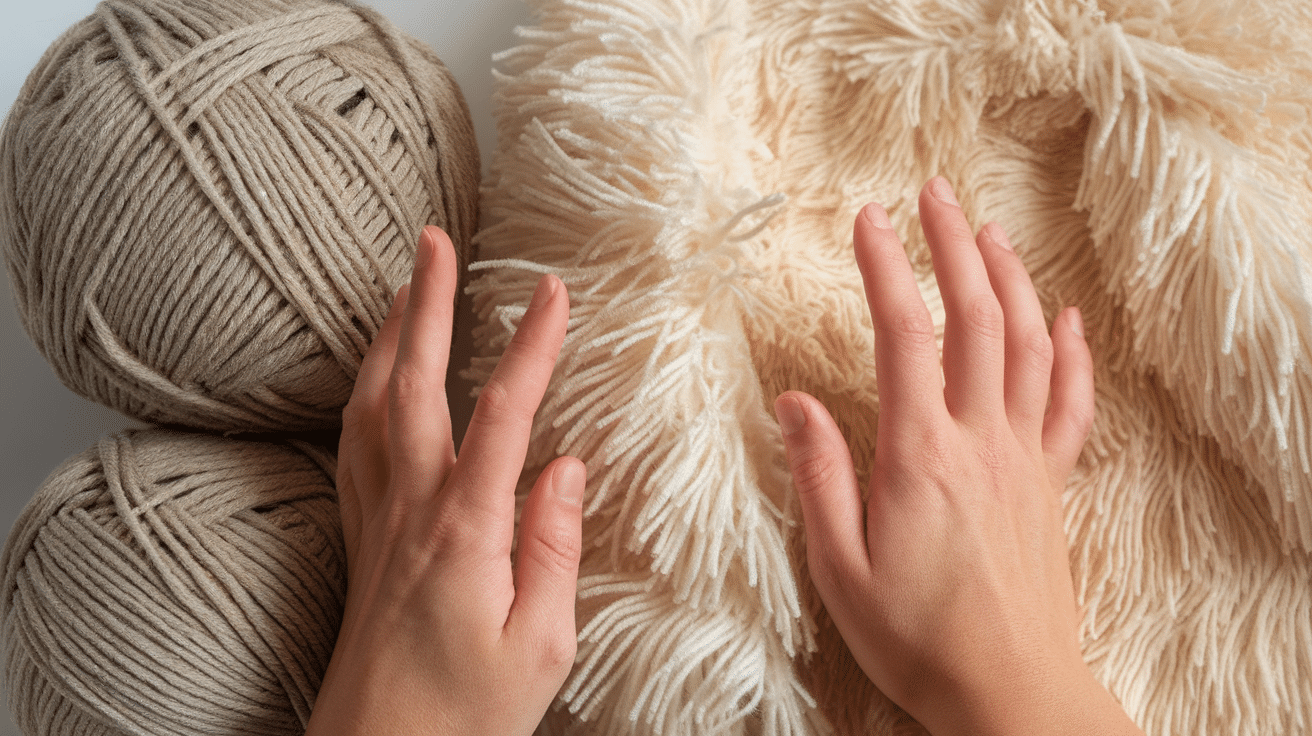
Not all acrylic yarn feels the same. Some cheaper options can be stiff or coarse, irritating delicate skin. Before buying, it is a good idea to feel the yarn in your hands to ensure it is soft.
Yarn that feels gentle will make clothes, blankets, and accessories more comfortable. Softer yarn also ensures that the baby enjoys wearing or using the item.
4. Consider Blended Yarns for Extra Comfort
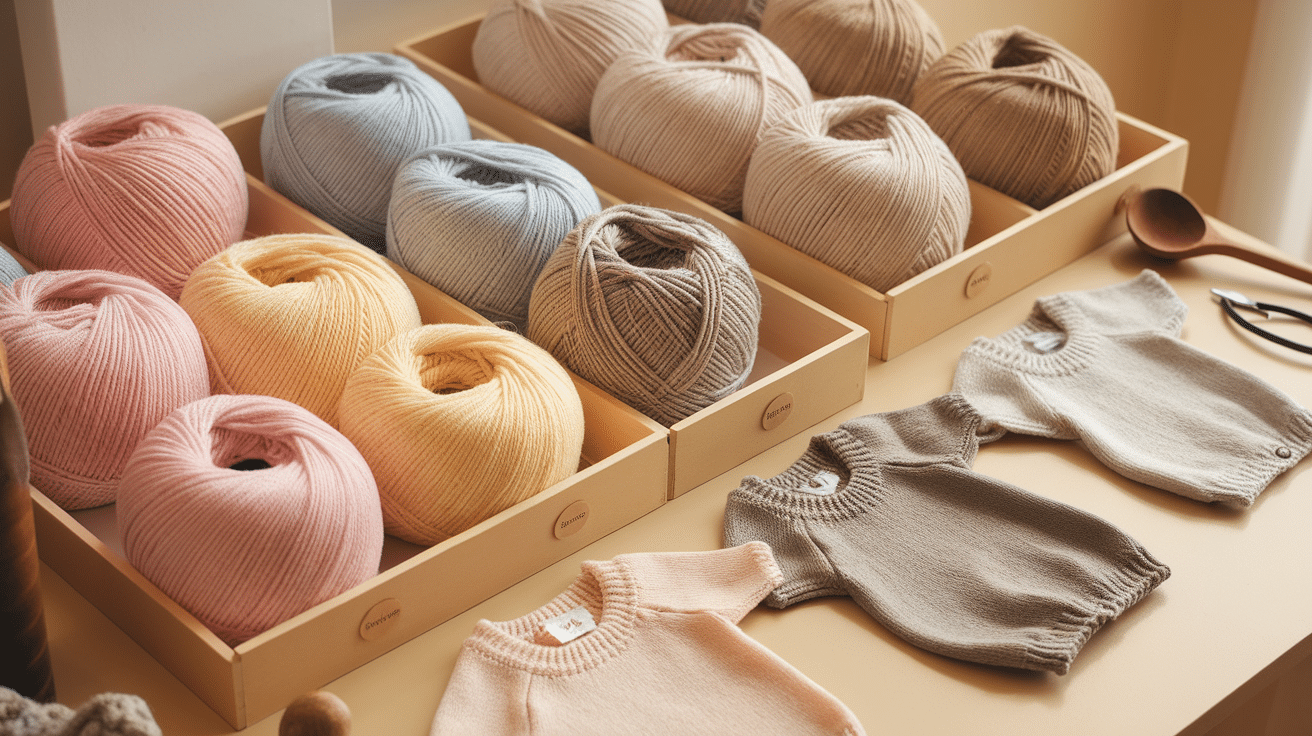
Blended yarns like acrylic mixed with cotton or wool offer additional benefits. Cotton acrylic blends are light and breathable, making them great for warmer months. Wool acrylic blends provide extra warmth, perfect for colder seasons.
These blends tend to be softer and more flexible, adding to the overall comfort of your project. They can also reduce static and minimize pilling, making them a practical choice for long-term use.
5. Check for Non-toxic Dye Certifications
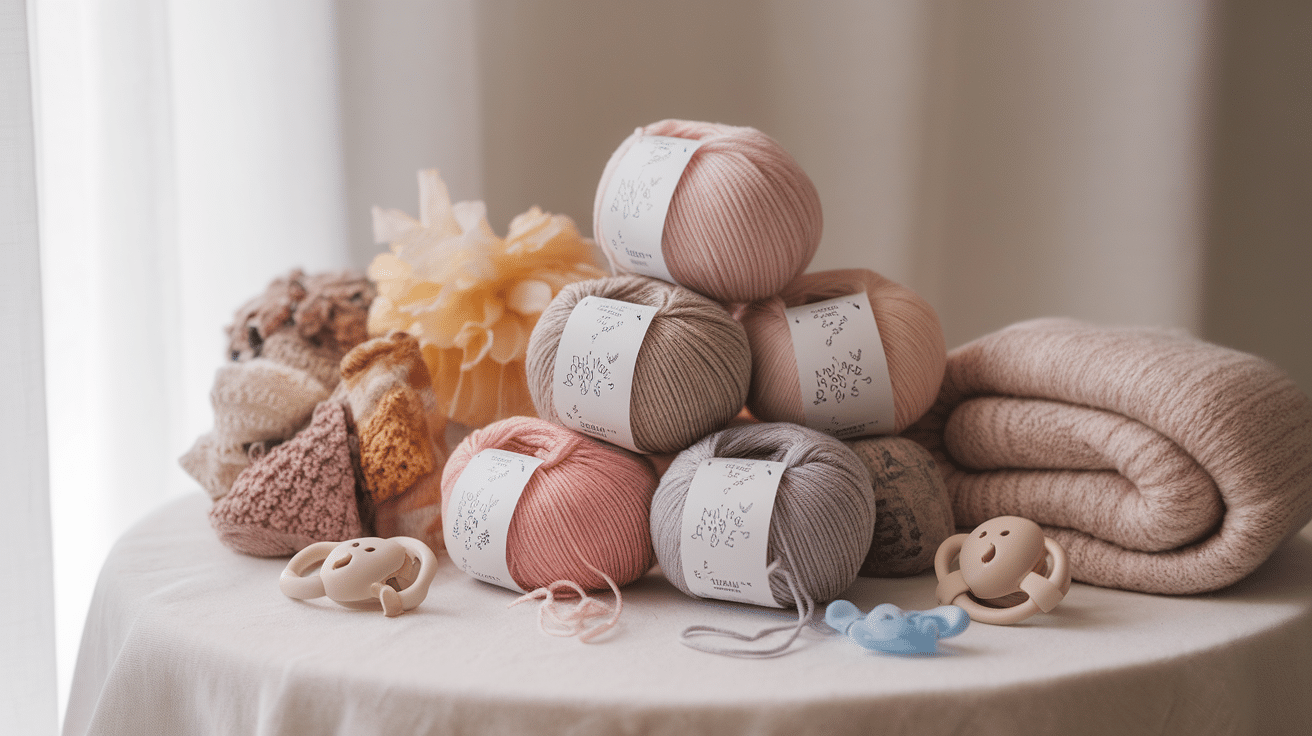
Since babies often put clothes or blankets in their mouths, choosing yarn free from harmful chemicals is important. Non-toxic dyes and finishes help ensure that your projects are safe.
Checking for certifications ensures that the yarn you use meets safety standards. This also gives you peace of mind, knowing your baby’s items are safe and well-crafted.
5 Common Mistakes When Using Acrylic Yarn for Babies
Even with good intentions, making mistakes when selecting or using acrylic yarn is easy. Avoiding these common pitfalls will help ensure your baby’s items are soft, safe, and long-lasting.
1. Choosing Low-Quality Acrylic That Feels Rough
Some low-cost acrylic yarns may feel coarse and unpleasant. Investing in higher quality, baby-friendly yarn ensures the projects feel smooth and comfortable against sensitive skin.
Spending a little extra on a better quality yarn can make a big difference in how the finished items look and feel.
2. Not Checking for Baby-safe Certifications
Some yarns contain dyes or finishes that aren’t suitable for infants. Failing to check for certifications or safety labels can result in using yarns with harmful chemicals.
Always verify that the yarn you select is labeled as baby-safe or tested for non-toxic substances. This simple step ensures the items you make are safe for infants to wear or use.
3. Using Yarn That Sheds Too Much
Acrylic yarns that frequently shed fibers can create a mess and pose a potential choking hazard. Opting for a low shed or anti-pilling yarn is a safer choice.
Low-shed yarns ensure that loose fibers won’t end up in a baby’s mouth and also help keep the finished product cleaner and safer for everyday use.
4. Ignoring Washing Instructions
Acrylic yarn is generally easy to maintain, but washing it incorrectly can cause pilling, stretching, or loss of softness.
Ignoring the care instructions on the label often leads to premature wear and tear. Proper washing techniques, such as using a gentle cycle of cold water or a laundry bag, help maintain the quality and appearance of your project.
5. Use High Heat When Blocking Acrylic Yarn
Acrylic yarn is sensitive to heat, and exposure to high temperatures can cause it to lose shape or even melt. Low heat or alternative methods for blocking and shaping items will prevent damage and keep the yarn in good condition.
By avoiding high heat, you help ensure the project retains its intended size and fit while preserving the integrity of the yarn.
Conclusion
Acrylic yarn is a convenient and affordable choice for baby clothes, blankets, and toys. It offers easy maintenance and a wide range of colors, making it a popular option for many crafters.
When selecting acrylic yarn for babies, focus on soft, hypoallergenic, and certified non-toxic brands. This ensures that the items you create will be gentle on sensitive skin and safe for everyday use.
With the right choice, you can craft durable and comfortable pieces that are easy for parents to care for.
Cotton or bamboo yarn can be a suitable alternative for those seeking more breathable and eco-friendly options. These natural fibers may offer enhanced comfort and sustainability, giving you even more options for your baby projects.
Frequently Asked Questions
Is acrylic yarn safe for newborns?
Yes, acrylic yarn is generally safe for newborns when it’s soft, non-toxic, and free from harsh dyes. Choosing a baby-friendly brand ensures comfort and reduces the risk of irritation or exposure to harmful substances.
Does acrylic yarn irritate baby skin?
Quality acrylic yarn designed for babies is soft and gentle, making it less likely to irritate sensitive skin. Low-quality or scratchy acrylic yarn may cause discomfort, so choosing a brand labeled specifically as baby-friendly is important.
Can babies wear acrylic yarn in hot weather?
Acrylic yarn isn’t very breathable, making it uncomfortable for babies in hot weather. Cotton or bamboo blends are often better choices for summer clothing or warm climates as they allow more air circulation and moisture absorption.
Is acrylic yarn toxic?
The acrylic yarn contains synthetic materials, but many baby-safe brands test for harmful chemicals and ensure their products are non-toxic. Checking labels and certifications helps confirm that the yarn is safe for use in baby clothes and blankets.
Does acrylic yarn cause allergies?
Acrylic yarn is considered hypoallergenic, making it a good alternative for babies who might react to natural fibers like wool. While rare, some individuals may still have sensitivities, so always choose soft, baby-friendly options to reduce the risk of irritation.


